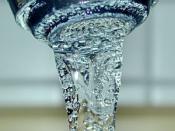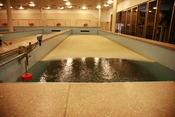Clean water is very plentiful and easily attainable in modern times, however water is put through many purification processes in order for it to become safe and drinkable. Water normally goes through 3 main processes of purification, starting storing water from rivers and lakes. Some measures are taken to keep the water safe until it is taken to the second step of purification where the majority of the filtration occurs, leading up to the third step in which the water is purified for the last time for any left over bacteria. However, before water can be purified, it must first be obtained.
When water is gained, water is put through a purification process called Primary Treatment. Large particles are first removed, such as sticks and stones in a process call screening. Water is then stored for biological purification and also as a precaution against drought. This may take from several days to as long as a few months.
After storage, the water's chlorine and salt levels are regulated using chlorine and soda ash respectively.
The second step, as aforementioned, is where most of the purification takes place. Large objects may have been removed in the first step, but many small particles are still present. As a result, the water is filtered several times. Also, water is softened and its ph levels are regulated. Sediments and suspended matter is filtered out.
The final step in water purification is the Tertiary Treatment. In the previous steps, sediments were removed, however in this step bacterium and germs are destroyed. Chlorine is mainly used to destroy these pathogens; however ozone is also used as a powerful cleanser. Ozone reacts in a way to produce single atom oxygen molecules which are very toxic to most water based organisms. Additional methods are used including UV radiation. Optional processes may Obviously, water goes through a lot of pbe used such as fluoridation to add fluorine to water, though this is not necessary.
urification processes in order to become safe for drinking. Water must be obtained and have large sediments removed. Water must be regulated and have even the smallest particles removed. Bacterium and germs must also be destroyed. Water purification is a very complex process.



SOURCES PEOPLE!!!
Needs sources.
Concise. BUT Plagiarism is obviously present. Arent you gonna credit people???? hmmm??
Seems to come out of a text book. hmmmmm
0 out of 0 people found this comment useful.